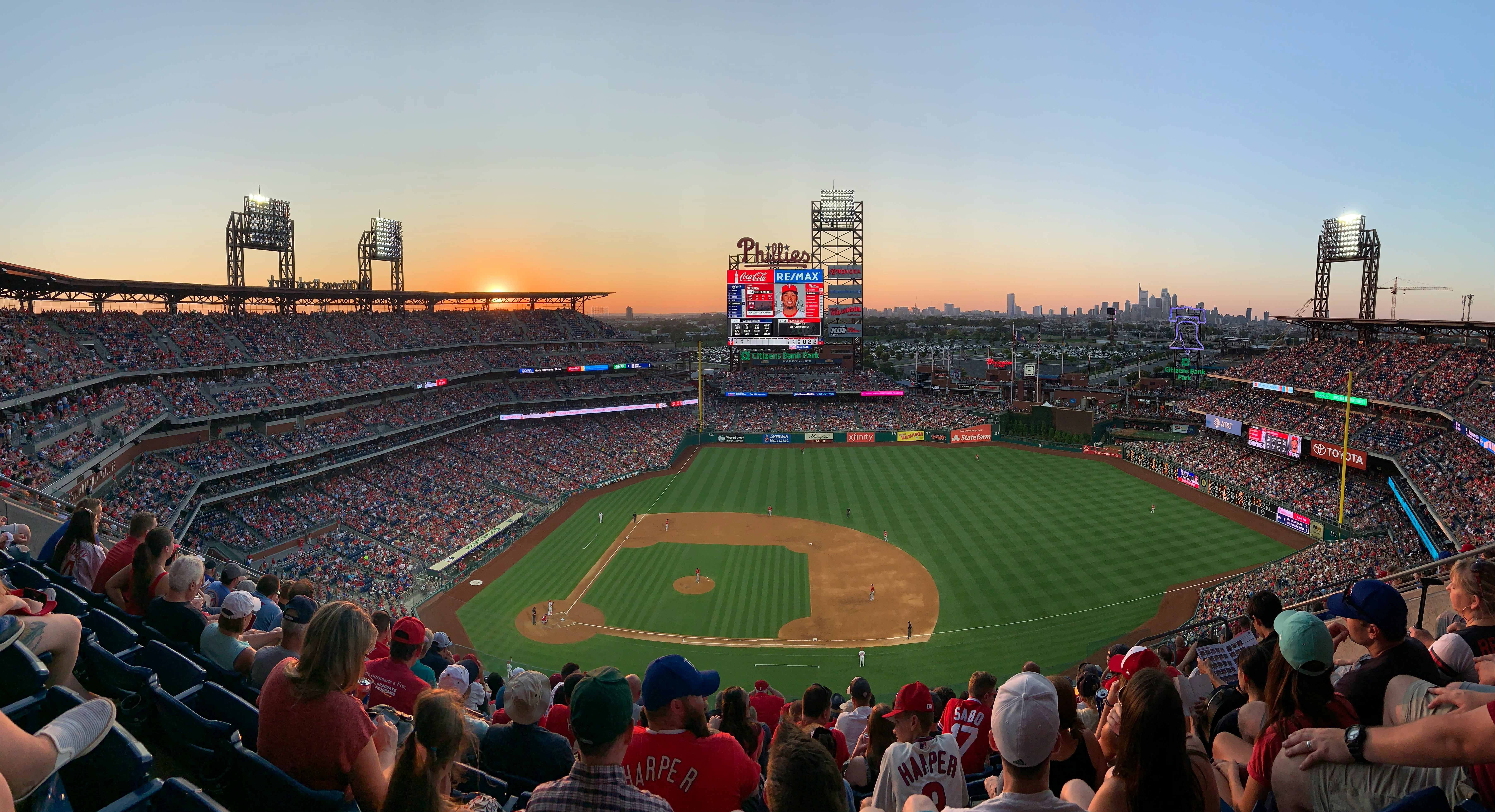The Economic Argument for the Sixers Stadium Isn’t Compelling
The arena's sensory overload—the aroma of hot dogs, beer, and popcorn, the cacophony of cheering fans—left a mark on my memory. It's precisely because of these personal connections that debates over the construction of sports stadiums evoke such passion.
I remember my first Sixers game vividly. I saw Allen Iverson hit a behind-the-back layup, and the crowd went wild. Iverson then ran to the sidelines and threw his towel in the crowd; a woman caught it and screamed, holding it to her chest tightly as if someone would grab it right out of her hands. As a young kid, seeing the basketball players I’d seen on my television come to life was an unreal, almost spiritual experience.
The arena's sensory overload—the aroma of hot dogs, beer, and popcorn, the cacophony of cheering fans—left a mark on my memory. It's precisely because of these personal connections that debates over the construction of sports stadiums evoke such passion. The Sixers are a sacred part of the Philadelphia and larger Pennsylvania community. But when it comes to the proposed new Sixers arena in Philadelphia's Chinatown, we must set nostalgia aside and confront an uncomfortable and sad truth: the economic argument its supporters are making may not hold up.
Proponents of new stadiums typically trot out economic promises: construction jobs, game-day spending, employment, tourism, and corporate attraction. These arguments sound compelling on the surface, but they crumble under scrutiny. The fundamental flaw? They misunderstand the essence of urban economic revitalization. Urban economic growth occurs when a community's resources—people, capital, and land—become more productive. By this metric, stadiums have struck out over half of the time.
Let's examine the evidence. A study by the Brookings Institute, Sports, Jobs, and Taxes, found that new sports facilities have a minimal impact on overall economic activity and employment. No recent facility has generated a reasonable return on investment or even been self-financing in terms of net (the amount of money you have left after subtracting taxes) tax revenues. This isn't an isolated finding. Economists Robert Baade and Victor Matheson have shown that new stadiums rarely deliver on promises of job creation or significant economic impact. Their research across multiple cities reveals a pattern of overpromising and underdelivering regarding the financial benefits of sports facilities.
Now, let's bring this home to Philadelphia. The city's economic report on the proposed Sixers arena in Chinatown is a damning indictment. While it states that the project “will not lead to direct housing displacement,” it warns of “increased indirect displacement of small businesses and low- and fixed-income individuals through gentrification and loss of cultural identity in Chinatown.” Even more troubling, the report concludes that half of Chinatown's small businesses “are not positioned to benefit from the Arena and may experience negative impacts.”
This isn't just speculation. The city’s report draws on case studies from similar stadium projects in Brooklyn, Sacramento, and Washington D.C. While economic projections aren't perfect, when a city's research predicts detrimental effects on an existing community, we can’t ignore it. The story of Brooklyn's Barclays Center is also particularly instructive. Despite promises of economic revitalization, many local businesses struggled after its construction, and the promised job creation fell far short of expectations.
The uncomfortable reality is that while the Fashion District and Chinatown desperately need economic revitalization and development, a new Sixers stadium is not the silver bullet its proponents claim.
Proponents of the stadium argue that it's being built on a mall and parking lot, not residential areas, and that it will add approximately 395 housing units, with 79 designated as affordable. They claim this negates concerns about displacement. But this argument misses the forest for the trees. While direct displacement may be limited, the indirect effects are far more widespread.
Adding 79 affordable units is a drop in the bucket compared to the potential displacement pressures the stadium could create in the surrounding area. Urban development experts like Lance Freeman have shown that even when new projects don't directly displace residents, they can still lead to “exclusionary displacement” – where rising property values and rents make it impossible for low-income residents to move into the neighborhood, gradually changing its character and demographics. Moreover, the leftover 316 market-rate units will likely be priced well above what many current Chinatown residents can afford.
Another argument supporters of the stadium make is that building the stadium will create union jobs because it will be built by union labor. Some labor unions, such as the Philadelphia Building and Trade Union, have supported the stadium, calling it an opportunity to “galvanize the construction industry in Philadelphia.” The truth is that the jobs stadiums create are seasonal and tend to be low-wage. Also, when Nevada built a new stadium, the construction jobs they thought would be created fell well below the expected numbers, causing a headache for union labor and construction workers in the city.
This same issue happened in New York with the creation of the Bills stadium. The governor claimed 10,000 new construction jobs would be created, but only 6,800 jobs were created. Projections are never perfect, but if you are going to argue that an economic project with millions of dollars in tax breaks is going to do something, you better be damn sure it delivers every slice of the pie.
Another often overlooked factor is the opportunity cost of public investment in stadiums. Every dollar spent on arena subsidies or infrastructure is not spent on education, public transportation, or other services that have proven long-term benefits for urban economies. When cities pour resources into stadiums, they often do so at the expense of more effective economic development strategies.
So, where do we go from here? If we genuinely want to boost Philadelphia's economy and support communities like Chinatown, we must think beyond flashy stadium projects and focus on proven strategies for sustainable economic growth. I’m not against development or building more housing. I’m for building more housing, and I’m pro-development, but we cannot act as if this is the best solution to fix the economic crisis in the fashion district.
The people of Chinatown and Philadelphia don’t deserve a middling proposal like this; they deserve the best. For Philadelphia, “the best” means investing in small business support and incubation programs, funding SEPTA and infrastructure, funding education and workforce development initiatives, and creating affordable housing. We must build more, but a stadium isn’t the solution we need.
Look, I get it. I love the Sixers and I don’t want them to go to New Jersey, which by the way the deal to send the team to Camden has its own set of public financing issues. No one wants to see their favorite sports team pack their bags and go elsewhere. The Sixers and Philadelphia deserve a stadium that is a state-of-the-art facility and economically benefits the city. Those childhood memories of game nights many of us have are priceless. But we can't let nostalgia cloud our judgment when the economic future of our city is at stake. The numbers don't lie: stadiums are rarely the economic engines they're purported to be. They're more like economic airballs – flashy, attention-grabbing, but ultimately missing the mark regarding sustainable growth and community development.
Philadelphia deserves better than a glossy Hail-Mary pass disguised as urban development. We need a pro-growth development game plan prioritizing long-term, inclusive, union-backed growth over short-term spectacle. Let's invest in our people, neighborhoods, and future in ways that will yield dividends for future generations.




